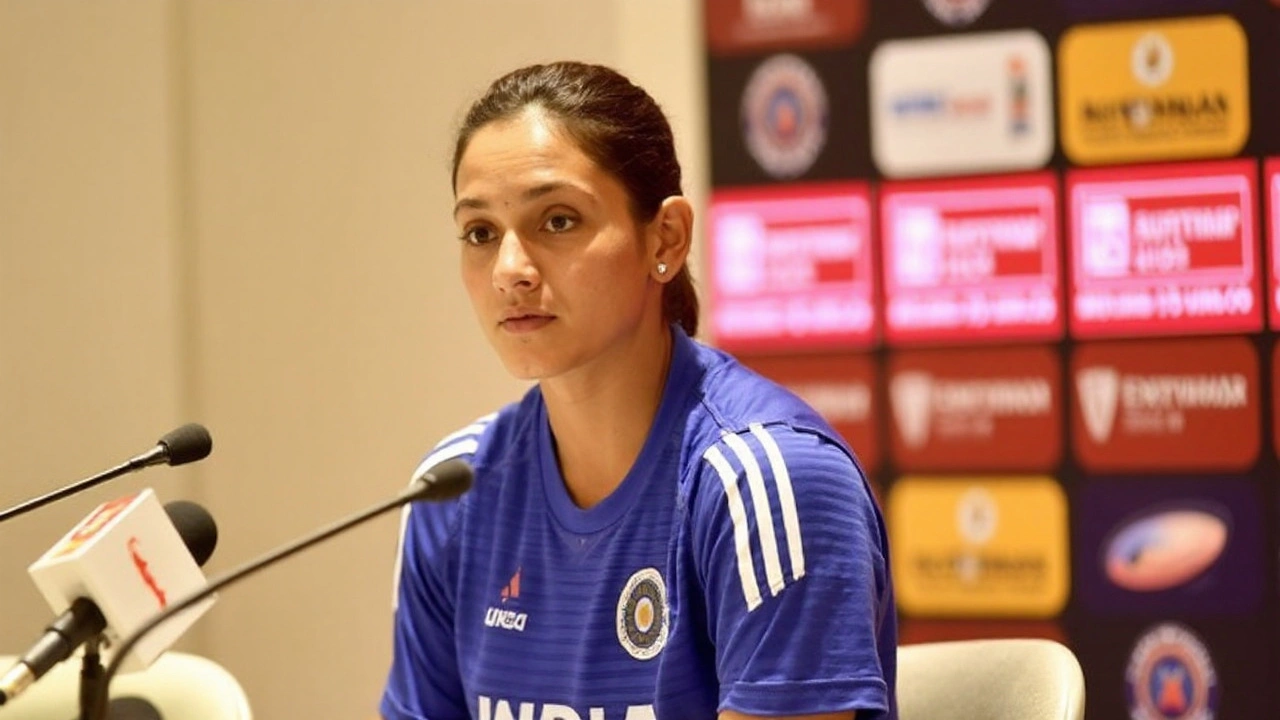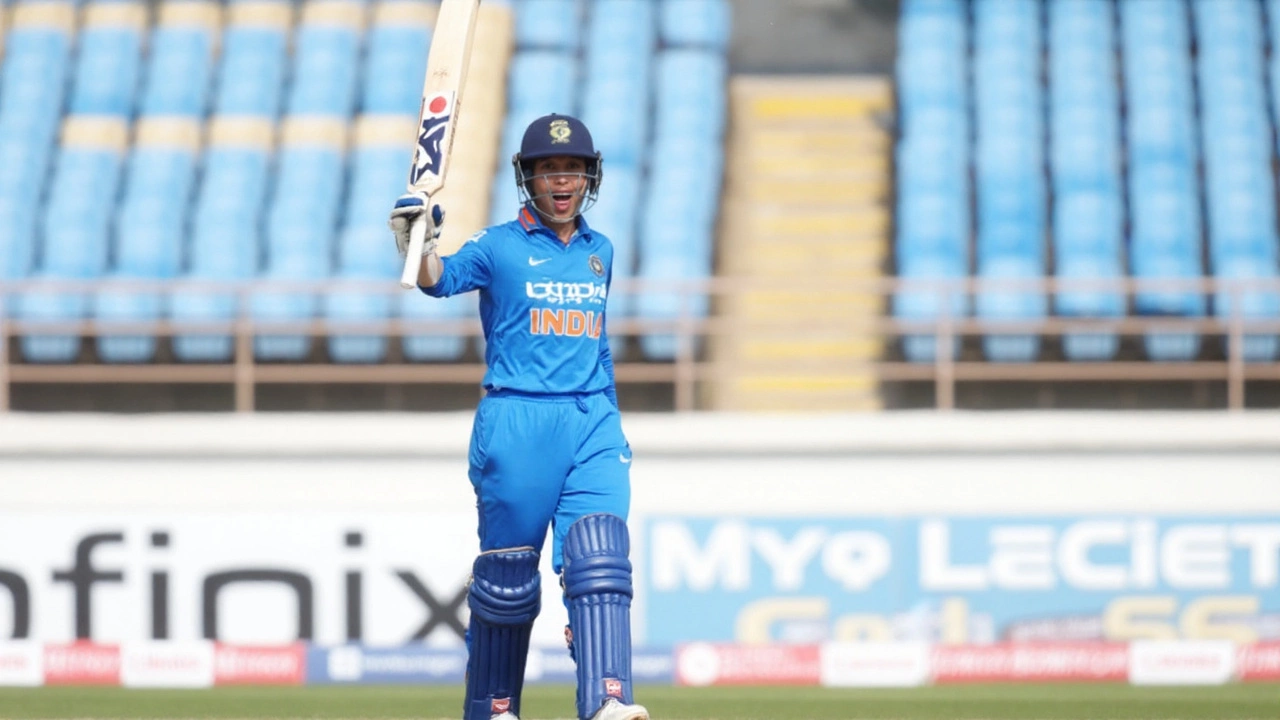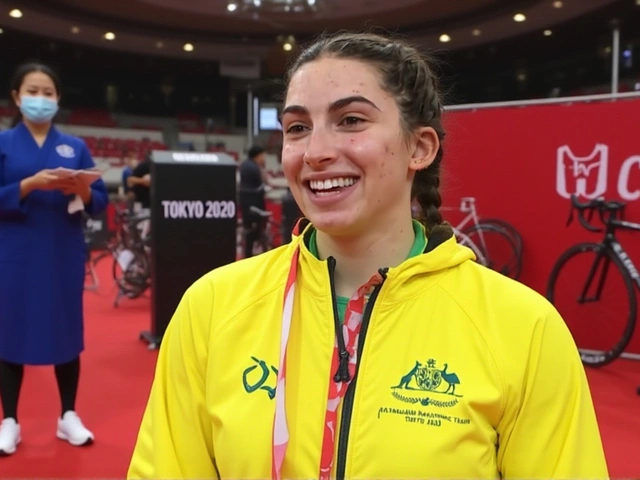How the first ODI unfolded
Final ball, one run needed, the field pulled in, a hush across New Chandigarh. That is how this series started: a day-night opener that went right to the edge before Australia Women found the single they needed to go 1-0 up. The margin was as tight as it gets, and the nerves on both sides felt almost physical under the lights.
India had set it up well after winning the toss and batting. Pratika Rawal and Smriti Mandhana walked out like they owned the opening hour, rolling out a 100-run stand that mixed clean timing with uncomplicated running. Mandhana’s fifty came off 55 balls with six fours and a six; Rawal’s off 67 with six boundaries of her own. By the first drinks break, India were 75 for 0 in 13 overs, a platform that looked built for 300.
The tempo stayed steady through the middle. India were 142 for 1 after 30 overs, Harleen Deol adding a brief 14 before the stand broke. A review for Harmanpreet Kaur later in the 33rd over went against India, and that stalled momentum just when they were eyeing a big last ten. Australia’s bowlers leaned on cutters and cross-seam, took pace off, and forced India to manufacture power rather than receive it. The result: boundaries dried up for patches, and the finish was measured rather than ferocious. India still closed at 281 for 7—competitive, but perhaps 15 short of what that start had promised.
What looked par on a fresh September evening shifted once the lights took full hold. Under lights in North India, the ball can skid on, and gripping it as a spinner becomes tricky. Australia’s chase reflected that. Beth Mooney set the tone, using nimble footwork against spin, getting close to the ball, and then opening up the off side. She threaded gaps rather than muscled the ball, moving to a vital 77 off 74 deliveries.
Alongside her, Phoebe Litchfield picked her moments. She kept making room against Deepti Sharma, lifting over mid-off and forcing the field to spread. Those calculated risks mattered: every time India tried to squeeze, Australia eked out a release shot to flip the pressure back.
Annabel Sutherland finished what Mooney started. Coming in with the equation still alive for both teams, she absorbed the dot-ball pressure and cashed in on anything full. Her unbeaten 54 off 51 had no fuss and no panic. The strike rotation in the final five overs was textbook: take the single, trust the partner, wait for the error. By the time the last over arrived, Australia had control but not comfort—exactly the kind of space where games flip. They didn’t let it.
India’s attack had their moments too. The seamers found grip early and nibbled outside the bat, but as the ball aged, they had to dip into pace-off variations. The spinners bowled brave lines and forced miscues, but without consistent grip, the miss became a near-miss more often than not. A couple of half-chances—an aerial drive not quite going to hand, a sharp stop turning into a tip-toed save—were the difference between a late squeeze and the single that sealed it.
The game’s rhythm also traced back to the day-night schedule. Play began at 1:30 PM local and swung into its second session after a short interval around dusk. India had the best of the bat-friendly daylight; Australia found truer ball-on-bat feel once the lights took over. It wasn’t a landslide shift, but it amplified Australia’s method: hit the gaps, keep the board moving, punish the rare error.
If there was a hinge point, it came in the span where Mooney handled the spinners and denied India a cluster of wickets. She danced down to smother length and then, next ball, rocked back to cut when the length dragged. That two-gear approach disrupted the spinners’ rhythm and made captaining the middle overs a puzzle.
For India, Rawal and Mandhana were the bright lights at the top. Their control through the first 20 overs was the template India will carry into the second ODI. The question is the finish. With a base like 142 for 1 at 30, there’s a case for an earlier surge, especially when slower balls are coming and square boundaries are in play. They’ll also look at match-ups—when to hold a hitter for a specific bowler, and how to protect a set batter from a bowler who’s just found a helpful grip.

Key moments and what it means
- India’s dream start: Rawal-Mandhana put on 100 for the first wicket, setting up 281/7. The control, especially through 13–20 overs, gave India a base they can build on for the rest of the series.
- Mooney’s anchor: A 77 off 74 with constant footwork against spin, finding singles and twos even when boundaries slowed. It took the sting out of India’s squeeze.
- Litchfield’s intent: Making room against Deepti Sharma and punching over mid-off forced field changes and opened the square boundaries for ones and twos.
- Sutherland’s calm: An unbeaten 54 off 51 in a tight chase, with clean decision-making in the last five overs—low-risk rotation, high-value put-aways.
- Final-ball nerve: One needed, the field up, the moment heavy. Australia held their shape and found the single that mattered.
The 1-0 lead is more than a head start; it’s a reminder that Australia are comfortable living in the pressure moments. India were right there, and they’ll feel this was within reach. Turn a half-chance into a wicket, squeeze five more runs out of the death overs, or sneak one more dot into the 49th, and the narrative flips.
There’s not much turnaround in a three-match ODI series, and both teams know the second game often decides the arc. India’s batting template is sound; the end-overs punch is the tweak. Australia’s middle-order composure held under lights; their next ask is to keep finding those middle-over releases when the ball grips more. Expect another arm wrestle, and don’t be surprised if this series keeps walking the tightrope it found on night one.





